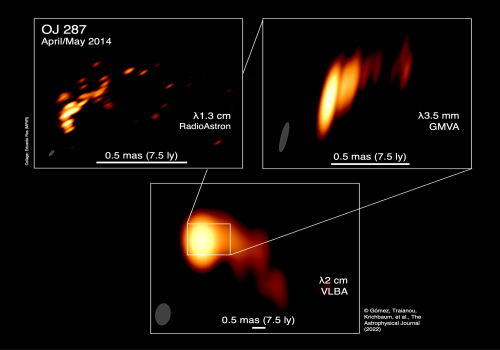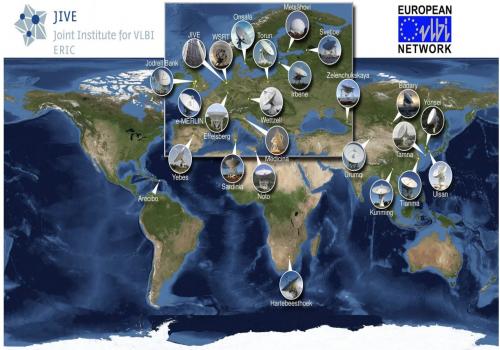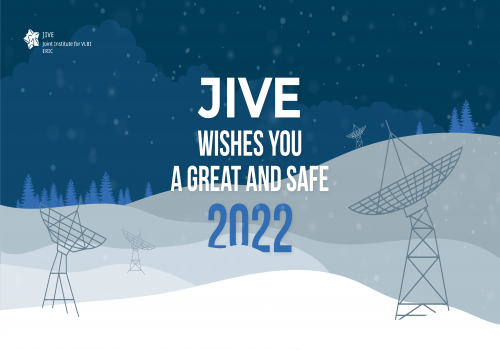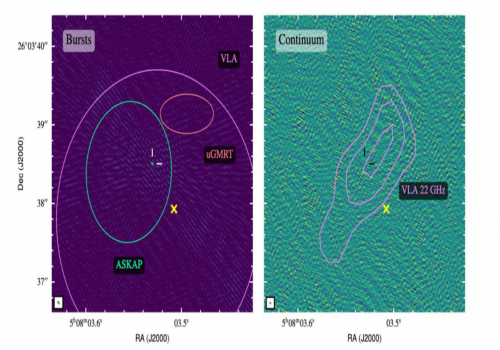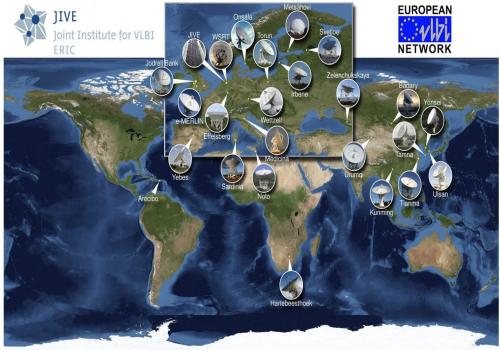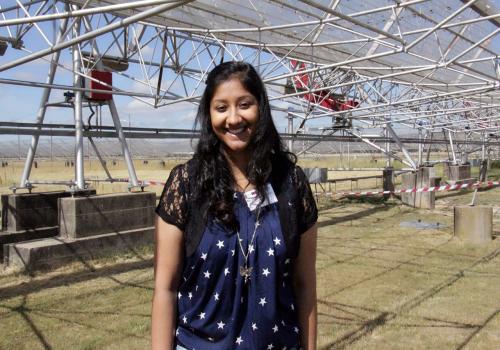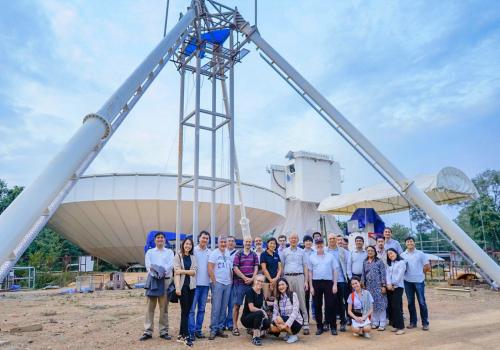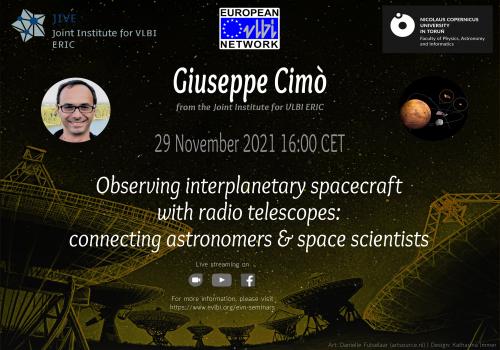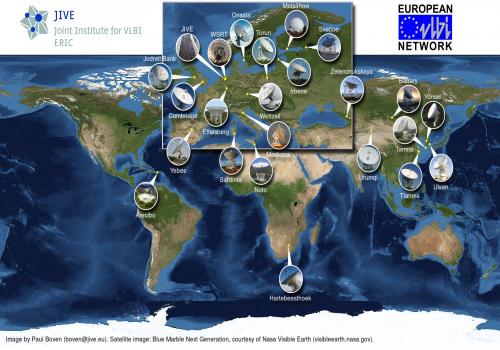News
Breaking the Resolution Boundaries: Observing the supermassive black hole binary candidate OJ 287 from Earth and space
19/01/2022
An international team of researchers - lead by the Spanish Institute of Astrophysics of Andalusia (IAA-CSIC) and including participation from a JIVE researcher - has obtained an image of radio emission in the active galaxy OJ 287 at an angular resolution of 12 micro arcseconds, which is presently the highest resolution achieved in astronomical observations.
The EVN/JIVE Newsletter #61 is published
03/01/2022
The January 2022 issue of the EVN/JIVE Newsletter is now available and includes relevant updates of the European VLBI Network (EVN).
Season's greetings and happy new year 2022
21/12/2021
On behalf of everyone at the Joint Institute for VLBI ERIC we would like to wish you, your family and colleagues, and all our partners and stakeholders a happy, peaceful and safe festive season and new year 2022.
EVN Call for Proposals is open
21/12/2021
Observing proposals are invited for the European VLBI Network (EVN). The deadline for proposal submission is 1 February 2022 at 16:00 UTC. See the Call for Proposals for full information about the call and how to submit proposals.
Job Vacancy: JIVE Support Scientist
17/12/2021
The Joint Institute for VLBI ERIC (JIVE) invites applications for the position of JIVE Support Scientist to become available from as early as April 2022. The position has a 50%-50% split between support duties and the appointee's own research. Deadline for applications is 1 February 2022.
JIVE researcher receives prestigious NWO-Veni grant
16/12/2021
JIVE Researcher Shivani Bhandari has been the recipient of one of the NWO-Veni grants announced today that will allow her to develop research in the field of Fast Radio Bursts for a period of three years.
The JUMPING JIVE project successfully closes its activities
02/12/2021
The H2020 JUMPING JIVE project, which successfully passed its final review by the European Commission, has been instrumental during the past 4 years in the development and reinforcement of JIVE and the European VLBI Network (EVN) activities in key aspects for their sustainability that will impact the VLBI community in the next decades.
ASTRON-JIVE 2022 Summer Research Programme Opens Applications
01/12/2021
The Joint Institute for VLBI ERIC (JIVE) and the Netherlands Institute for Radio Astronomy (ASTRON) announce up to 7 grants for students to participate in the ASTRON/JIVE 2022 Summer Research Programme. Deadline for applications is 1 February 2022 00:00 CET.
Second edition of EVN Online Seminar Series
16/11/2021
The European VLBI Network (EVN) is pleased to announce the second edition of the series of online seminars “The sharpest view of the radio Universe: VLBI – Connecting Astronomers Worldwide”. Five seminars will cover different science topics illustrating how Very Long Baseline Interferometry can improve our understanding of many astronomical phenomena and how this technique is useful for the whole astronomical community. The new seminars will start on 29 November 2021 and will be organised around every six weeks, leading up to the organisation of the 2022 EVN Symposium on 11-15 July 2022.
The EVN/JIVE Newsletter #60 is published
02/09/2021
The September 2021 issue of the EVN/JIVE Newsletter is now available and includes relevant updates of the European VLBI Network (EVN).

